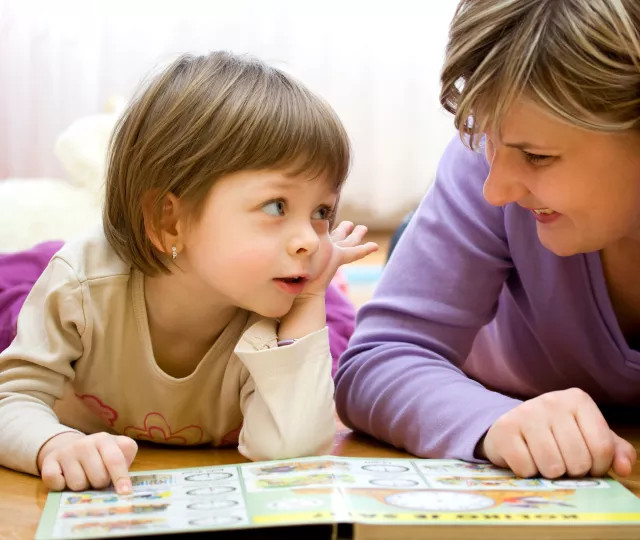This toolkit is designed to encourage families, caregivers, and educators to have open, accurate and constructive conversations about race, racial differences, racial inequity and racism, with their children/students, in an age-appropriate way. The main objectives are to:
- Provide users with resources to encourage and facilitate discussions about race/racism
- Increase children’s exposure to racially (and ethnically) diverse stories and characters
- Promote positive and accurate learning experiences about human differences and similarities
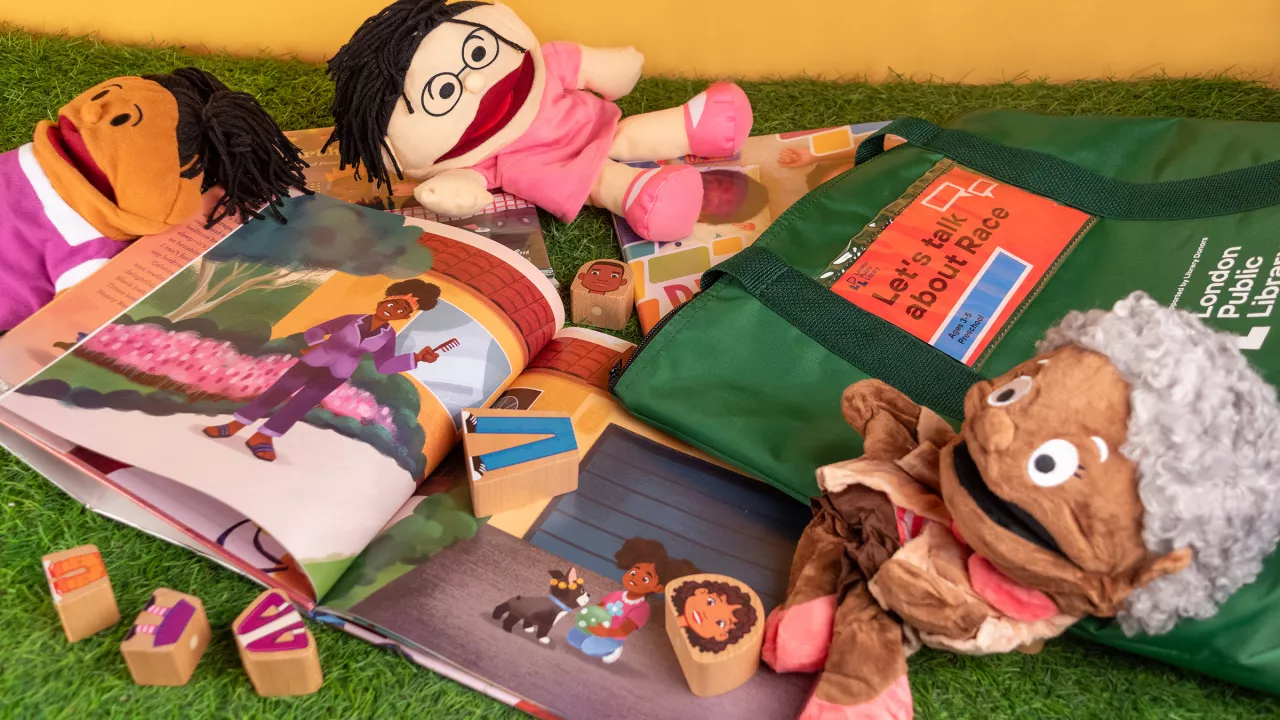
What's in this Kit?
Books and Activities
Our curated booklist for children 3-5 features Canadian authors from a variety of diverse backgrounds. Books are also available as stand-alone reads through the catalogue.
Toys, Games and Activities (Manipulatives)
Find a variety of toys geared to children aged 3-5. Use the books and puppets included in the kit to expose your child to diversity.
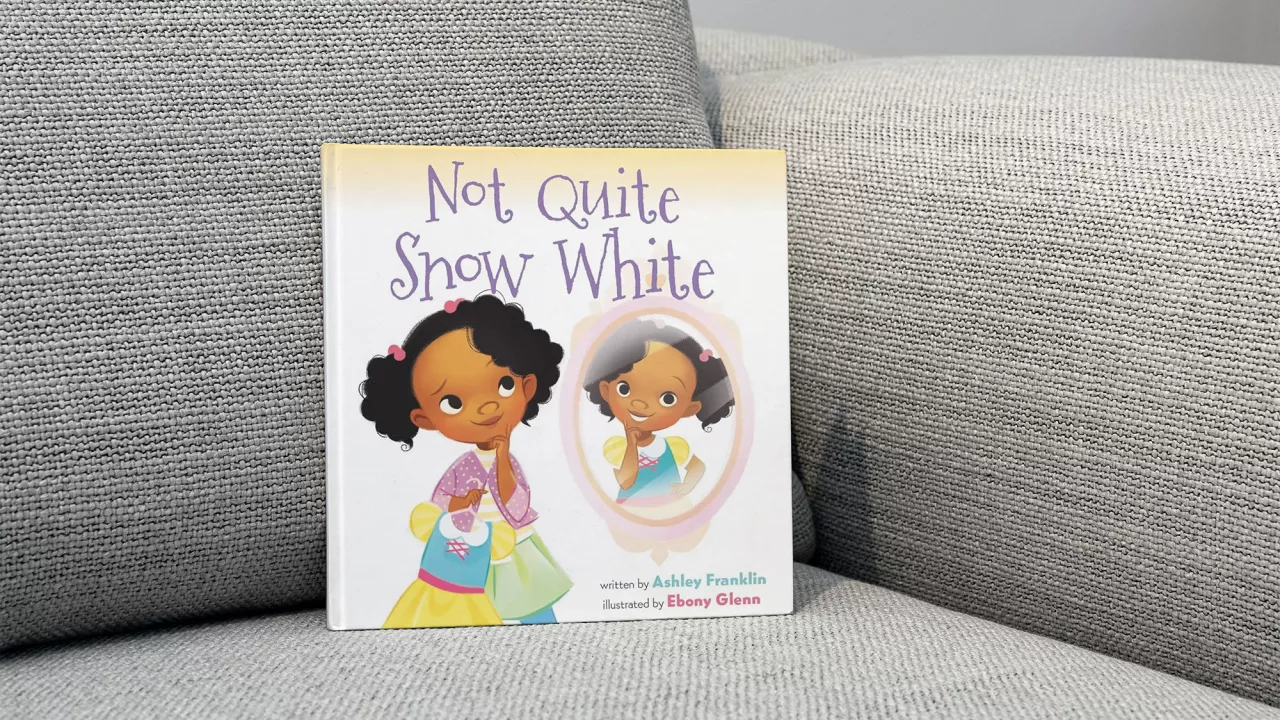
Not Quite Snow White
by Ashley Franklin
Not Quite Snow White encourages underrepresented children to dream big. It allows them to be able to see themselves in the stories around them. It also shares a larger message that children should be supported as they try to find themselves and their perfect place in the world. Children with big dreams who may not look like others who’ve gone before them in certain fields or areas can read it and take away the notion that they have every right to occupy the spaces that they wish to be a part of. Children who are accustomed to seeing themselves represented will get a glimpse of what it’s like to not have that—to witness the pain that words can cause whether they’re intentional or not.
Borrow Not Quite Snow White
-
- What does a princess look like? Can you name your favourite princess? Can a princess be tall/round/brown skinned like Tameika?
- Do you think it's fair to tell someone they can't be something because of their skin colour? Why/why not?
- Tameika overheard other students whispering about her behind her back that she is too tall, chubby, and brown. Have you ever heard someone say something about you or a friend that made you feel bad? What would you say to someone that you overheard talking about someone else?
- After talking to her parents, Tameika decided to audition for the play anyway because she loves to sing/dance and act. Can you think of a time when someone said you couldn't do something and you turned out to be great at it? What was that feeling like? What did you do about it?
- What can you do to try and understand someone who speaks differently from you?
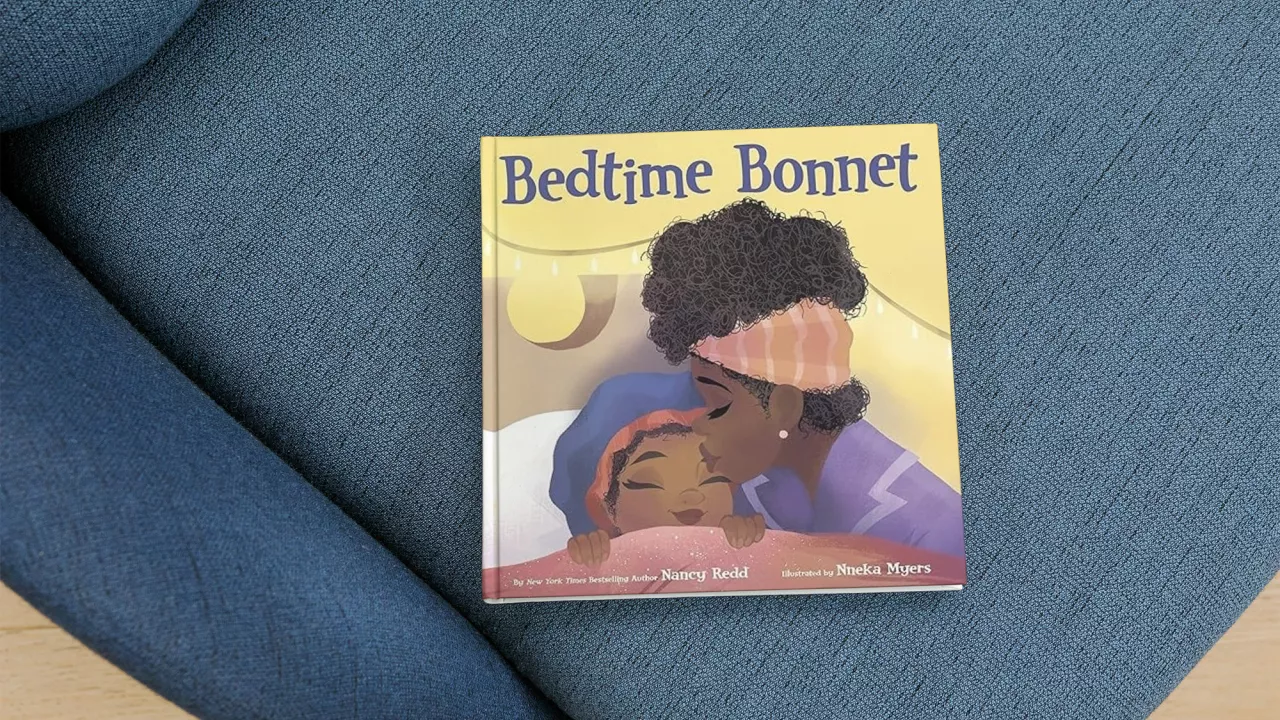
Bedtime Bonnet
by Nancy Redd
Bedtime Bonnet gives a peek into Black culture and the importance of hair with regard to identity. Hair means something different to each of us, but Black hair has a uniquely meaningful history as a symbol of survival, resistance and celebration. In this title, the bonnet head covering is included to show the self-care efforts that the character is undertaking as part of her family’s traditions. It provides a glimpse into what is involved in taking care of and maintaining naturally curly and kinky hair (from the locs, to hair wraps to braids). Its overarching theme ultimately highlights families doing their everyday routines.
Borrow Bedtime Bonnet
-
Make the connection that hair care is important for everyone. We all use many different items to make our hair look special.
- What kinds of things do you do to make sure your hair is healthy and looks good?
- What are some kind things you can say to family members and friends about their hair?
- How do you take care of your hair? Do you have favourite hair styles? What type of brush and comb do you use on your hair?
- Do you and your family have any night time rituals like the family in the book?
- What do you think about the different types of hair you saw in the story? Do you know anyone who has hair like that family?
- What is your favourite part of the book? Favourite illustration?
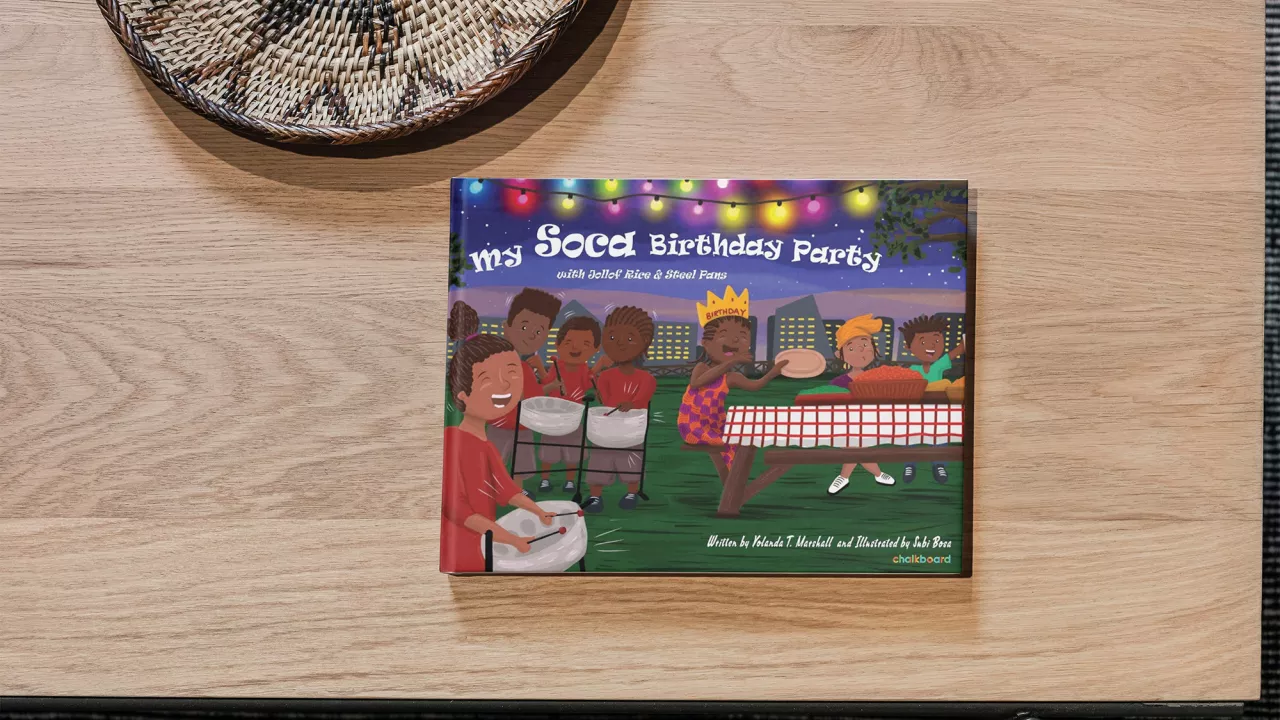
My Soca Birthday Party: With Jollof Rice And Steel Pans
by Yolanda T. Marshall and Subi Bosa
My Soca Birthday Party concentrates on the sharing and celebrating of different cultures. It highlights a group of diverse friends celebrating pieces of themselves and sharing those pieces with a classmate. This story allows children who do not have a Caribbean/African background to learn about other cultures, in a relatable way through food and music. There are always conversations among children about what they eat at home, what foods they like etc., and this book encourages that discussion in a respectful way.
Borrow My Soca Birthday Party
-
- What is your favourite food to make at home? Do you help to prepare it?
- Have you ever heard of any of the foods in the story before? Name some of the foods.
- Different countries have foods that are very popular. What are some popular foods that you know and where do you think they come from?
- What do you think (name some of the foods) taste like? (sweet, salty, bitter, etc...)
- Which food in the story do you think you'd like to try?
- If you could visit somewhere other than Canada and try some of their food, where would you like to go? Find a book about this place to learn more.
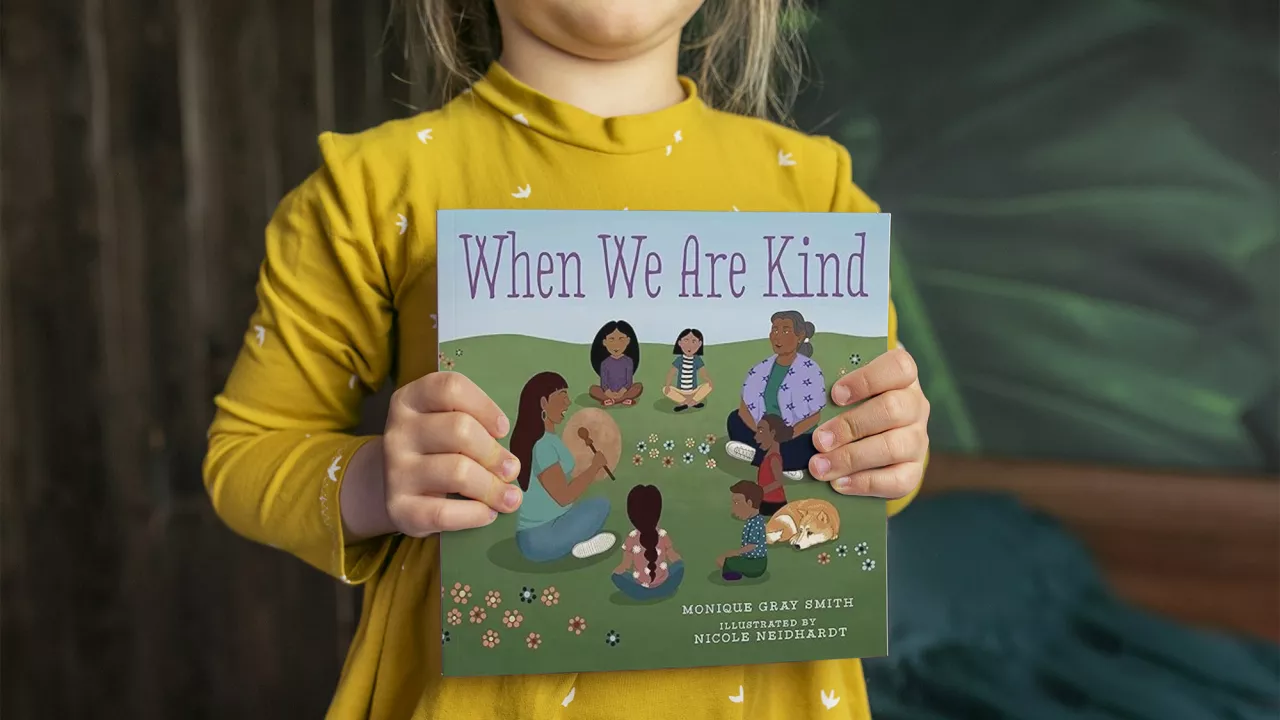
When We Are Kind
by Monique Gray Smith
When We Are Kind celebrates simple acts of everyday kindness and encourages children to explore how they feel when they initiate and receive acts of kindness in their lives. This title encourages children to be kind to others and to themselves. It also prompts them to think about kindness in new ways and to see themselves or their friends of their family reflected on each page. Positive portrayals of Indigenous families and children is so important, as there is a long history of stereotypes that have created a lot of prejudice, racism and misunderstandings about Indigenous communities.
Borrow When We Are Kind
-
- What does kindness mean to you?
- What are some ways that you show kindness to your friends/family/neighbours?
- Describe how you feel when you are kind to someone else?
- What are some ways that other people show kindness to you?
- How does it make you feel when someone is kind to you?
- Why do you think it's important to be kind to one another?
Beyond the Books
Suggested Actions for Parents and Caregivers
The following suggestions can help you continue to have conversations about race with your child, that support awareness, celebrate racial differences and practice anti-racism.
1. Learn the facts: By learning about the issues, you’ll be better able to discuss them. Listen to podcasts, watch videos, read up on the history of racism and civil rights etc., so that you’ll be better prepared to answer your child’s questions.
2. Discuss the science: A solid conversation about skin colour should both affirm a child's skin tone and offer a scientific explanation about skin. It should also focus on similarities - "I have skin. You have skin. We all have skin."
3. Keep conversations age-appropriate: At this stage, children are learning about right and wrong, and have a very keen sense of fairness. Talk about racism as unfair and unacceptable and that's why we need to aork together to create a better world for everyone.
4. Model it: Confront your own biases and model how you want your children to respond to others who may be different from them.
5. Look for books, movies, plays, etc., to share with your family. Diverse content will help your child see the differences and similarities between people.
6. Recognize and celebrate differences daily (i.e. resist colour-blindness): If your child asks about someone's skin colour, use this as an opportunity to acknowledge that people do indeed look different, but point out things we all have in common.
7. Keep the conversations going: Plan for a marathon, not a sprint. Talking about race and racism should not be a one-time occurrence. Encourage your child to come to you with questions and continue to talk about these issues.

